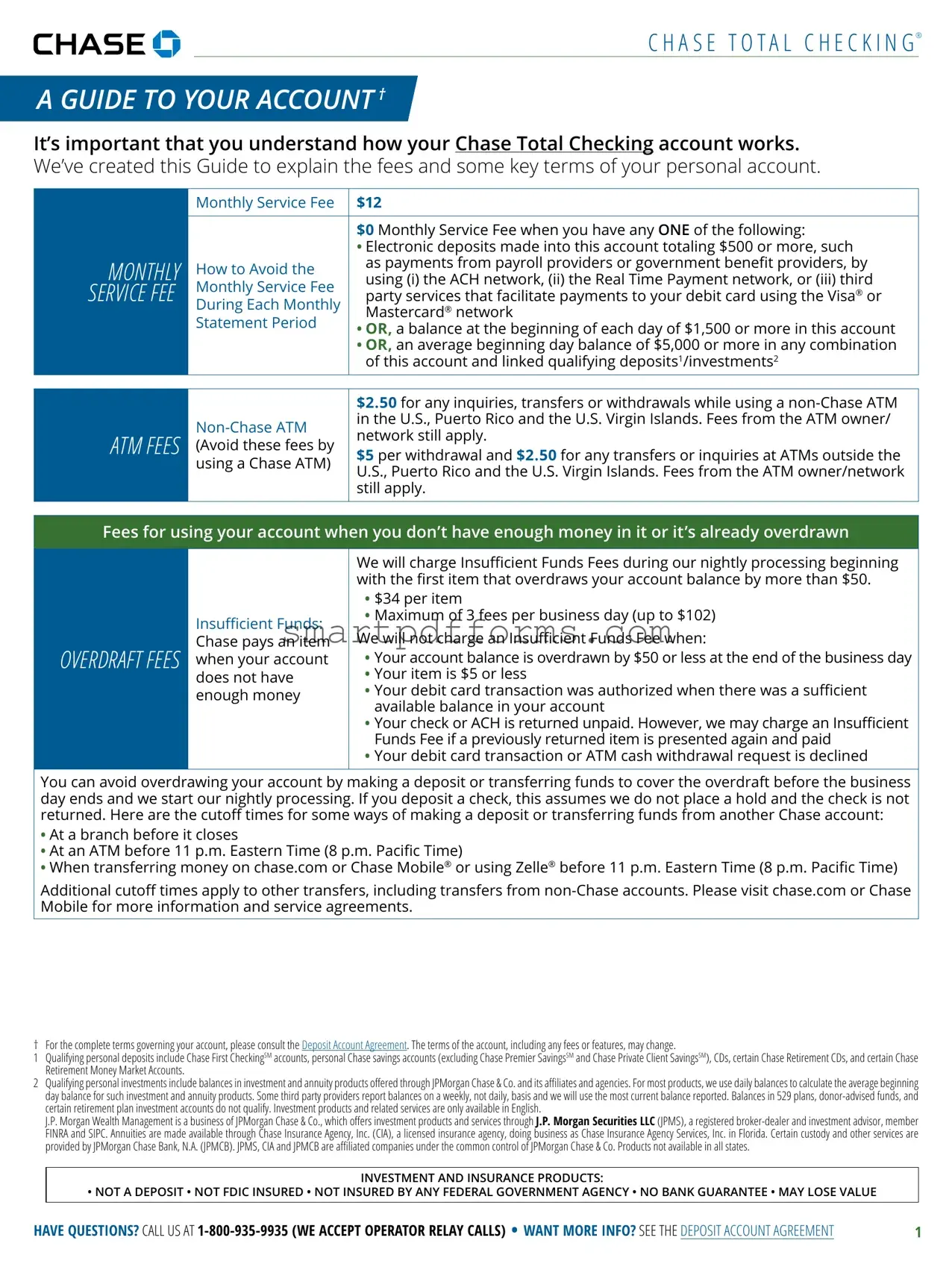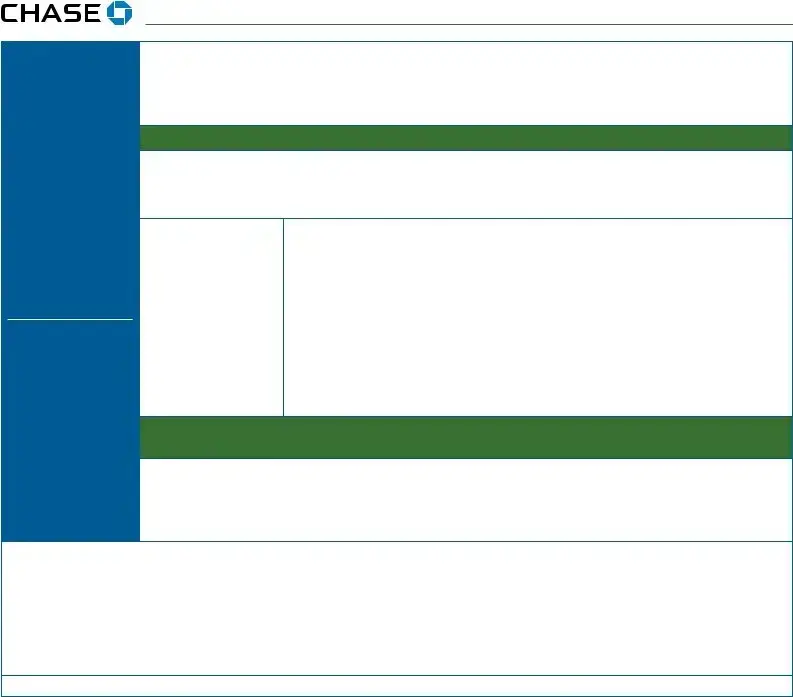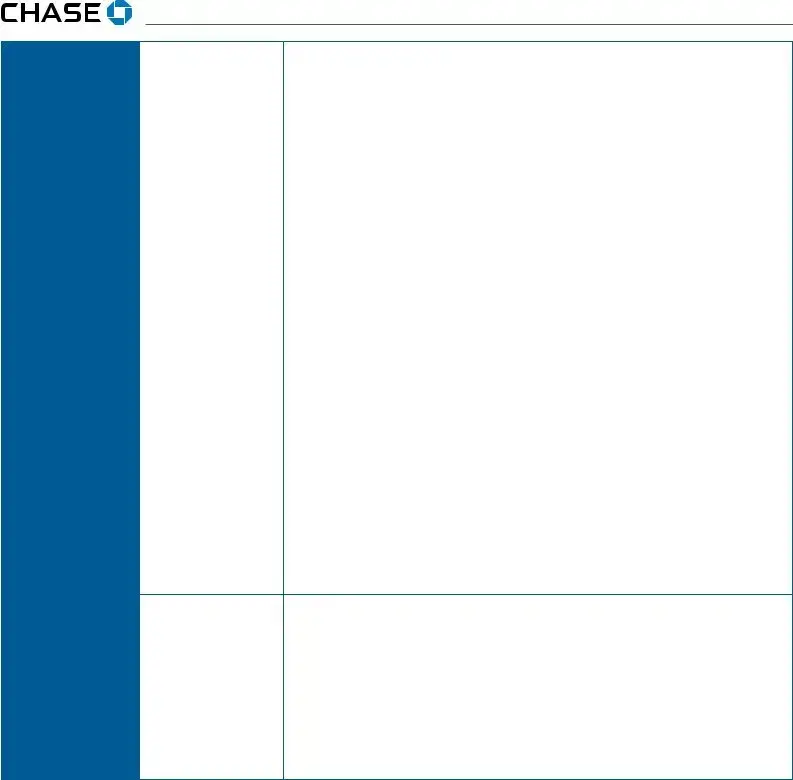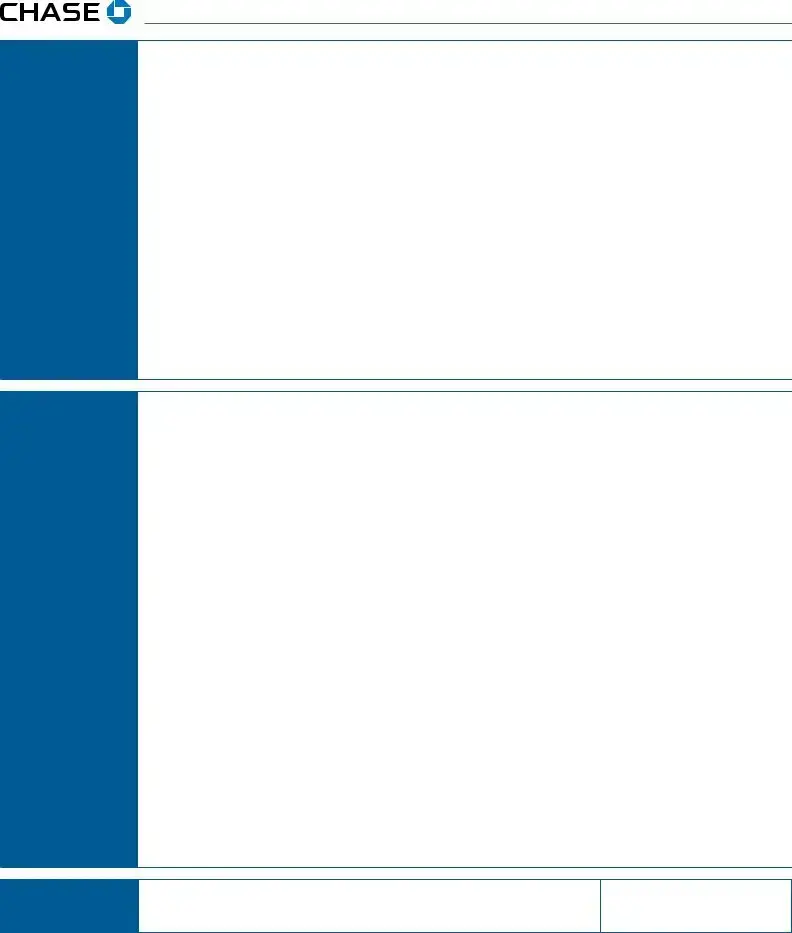C H A S E T O T A L C H E C K I N G®
A GUIDE TO YOUR ACCOUNT †
It’s important that you understand how your Chase Total Checking account works.
We’ve created this Guide to explain the fees and some key terms of your personal account.
Insufficient Funds:
Chase pays an item when your account does not have enough money
We will charge Insufficient Funds Fees during our nightly processing beginning with the first item that overdraws your account balance by more than $50.
•$34 per item
•Maximum of 3 fees per business day (up to $102)
We will not charge an Insufficient Funds Fee when:
•Your account balance is overdrawn by $50 or less at the end of the business day
•Your item is $5 or less
•Your debit card transaction was authorized when there was a sufficient available balance in your account
•Your check or ACH is returned unpaid. However, we may charge an Insufficient
Funds Fee if a previously returned item is presented again and paid
•Your debit card transaction or ATM cash withdrawal request is declined
You can avoid overdrawing your account by making a deposit or transferring funds to cover the overdraft before the business day ends and we start our nightly processing. If you deposit a check, this assumes we do not place a hold and the check is not returned. Here are the cutoff times for some ways of making a deposit or transferring funds from another Chase account:
•At a branch before it closes
•At an ATM before 11 p.m. Eastern Time (8 p.m. Pacific Time)
•When transferring money on chase.com or Chase Mobile® or using Zelle® before 11 p.m. Eastern Time (8 p.m. Pacific Time)
Additional cutoff times apply to other transfers, including transfers from non-Chase accounts. Please visit chase.com or Chase Mobile for more information and service agreements.
† For the complete terms governing your account, please consult the Deposit Account Agreement. The terms of the account, including any fees or features, may change.
1Qualifying personal deposits include Chase First CheckingSM accounts, personal Chase savings accounts (excluding Chase Premier SavingsSM and Chase Private Client SavingsSM), CDs, certain Chase Retirement CDs, and certain Chase Retirement Money Market Accounts.
2Qualifying personal investments include balances in investment and annuity products offered through JPMorgan Chase & Co. and its affiliates and agencies. For most products, we use daily balances to calculate the average beginning day balance for such investment and annuity products. Some third party providers report balances on a weekly, not daily, basis and we will use the most current balance reported. Balances in 529 plans, donor-advised funds, and certain retirement plan investment accounts do not qualify. Investment products and related services are only available in English.
J.P. Morgan Wealth Management is a business of JPMorgan Chase & Co., which offers investment products and services through J.P. Morgan Securities LLC (JPMS), a registered broker-dealer and investment advisor, member
FINRA and SIPC. Annuities are made available through Chase Insurance Agency, Inc. (CIA), a licensed insurance agency, doing business as Chase Insurance Agency Services, Inc. in Florida. Certain custody and other services are provided by JPMorgan Chase Bank, N.A. (JPMCB). JPMS, CIA and JPMCB are affiliated companies under the common control of JPMorgan Chase & Co. Products not available in all states.
INVESTMENT AND INSURANCE PRODUCTS:
• NOT A DEPOSIT • NOT FDIC INSURED • NOT INSURED BY ANY FEDERAL GOVERNMENT AGENCY • NO BANK GUARANTEE • MAY LOSE VALUE




